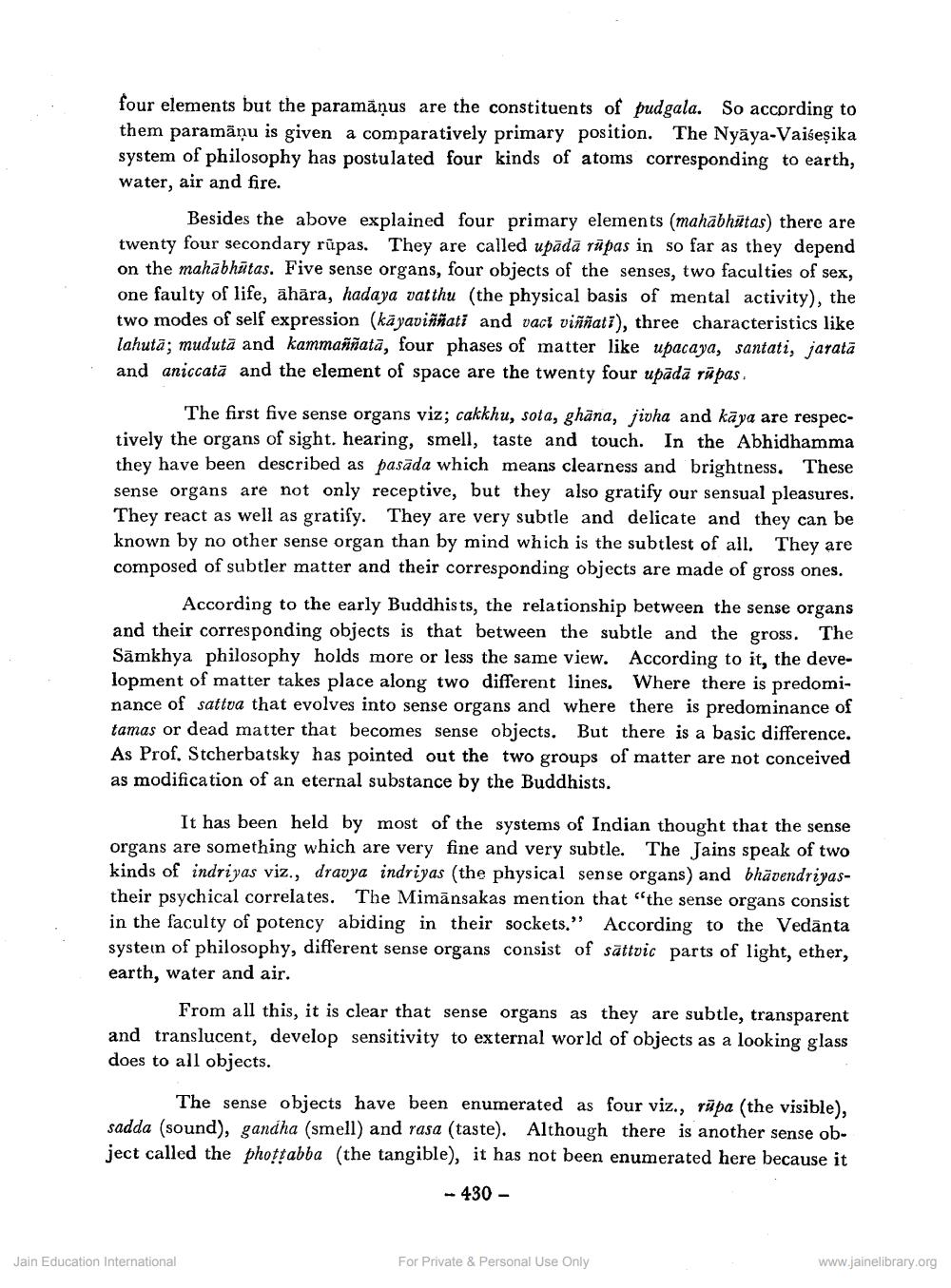Book Title: Concept of Matter in Lee Buddhism Author(s): Angraj Chaudhary Publisher: Z_Kailashchandra_Shastri_Abhinandan_Granth_012048.pdf View full book textPage 5
________________ four elements but the paramāņus are the constituents of pudgala. So according to them paramāņu is given a comparatively primary position. The Nyaya-Vaiseşika system of philosophy has postulated four kinds of atoms corresponding to earth, water, air and fire. Besides the above explained four primary elements (mahabhitas) there are twenty four secondary rūpas. They are called upädä räpas in so far as they depend on the mahabhūtas. Five sense organs, four objects of the senses, two faculties of sex, one faulty of life, ahara, hadaya vatthu (the physical basis of mental activity), the two modes of self expression (kayaviñati and vact viat!), three characteristics like lahuta; muduta and kammaññata, four phases of matter like upacaya, santati, jaratā and aniccata and the element of space are the twenty four upadā rūpas. The first five sense organs viz; cakkhu, sota, ghana, jivha and kaya are respectively the organs of sight, hearing, smell, taste and touch. In the Abhidhamma they have been described as pasada which means clearness and brightness. These sense organs are not only receptive, but they also gratify our sensual pleasures. They react as well as gratify. They are very subtle and delicate and they can be known by no other sense organ than by mind which is the subtlest of all. They are composed of subtler matter and their corresponding objects are made of gross ones. According to the early Buddhists, the relationship between the sense organs and their corresponding objects is that between the subtle and the gross. The Samkhya philosophy holds more or less the same view. According to it, the development of matter takes place along two different lines. Where there is predominance of sattva that evolves into sense organs and where there is predominance of tamas or dead matter that becomes sense objects. But there is a basic difference. As Prof. Stcherbatsky has pointed out the two groups of matter are not conceived as modification of an eternal substance by the Buddhists. It has been held by most of the systems of Indian thought that the sense organs are something which are very fine and very subtle. The Jains speak of two kinds of indriyas viz., dravya indriyas (the physical sense organs) and bhavendriyastheir psychical correlates. The Mimänsakas mention that "the sense organs consist in the faculty of potency abiding in their sockets." According to the Vedanta system of philosophy, different sense organs consist of sattvic parts of light, ether, earth, water and air. From all this, it is clear that sense organs as they are subtle, transparent and translucent, develop sensitivity to external world of objects as a looking glass does to all objects. The sense objects have been enumerated as four viz., rapa (the visible), sadda (sound), gandha (smell) and rasa (taste). Although there is another sense object called the photfabba (the tangible), it has not been enumerated here because it - 430 - Jain Education International For Private & Personal Use Only www.jainelibrary.orgPage Navigation
1 ... 3 4 5 6 7 8
